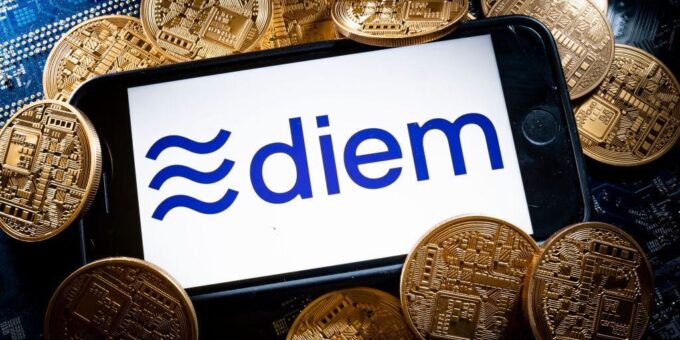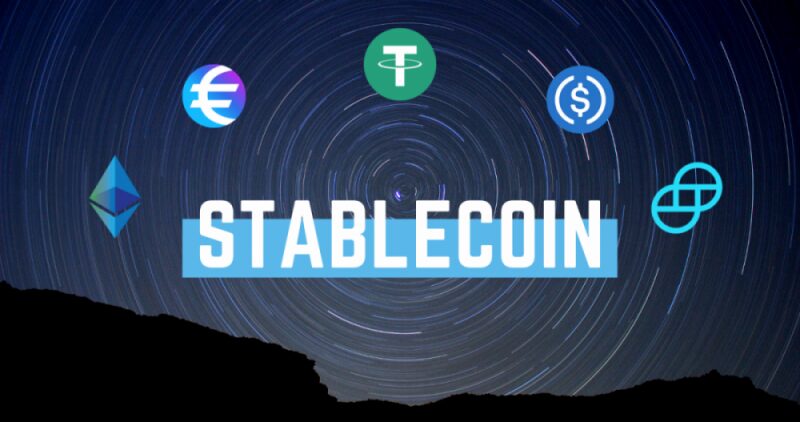If you’re new to the world of cryptocurrencies, you certainly know of Bitcoin and potentially Ethereum. However, you might have heard the term “stablecoin” in your research. If you have, you might be wondering just what a stablecoin is, as well as what can be considered one. Well, this post is going to break that down for you.
What’s the definition of a stablecoin?

A stablecoin is a cryptocurrency tied to the value of a physical asset. This basically means the crypto isn’t of its own value like Bitcoin and others are. Instead, they might be tied to a fiat currency or a precious metal. Examples of popular stablecoins include Silver Coin, Tether, or USDC.
Basically, if it represents something tangible, it’s a stablecoin.
What’s the point of stablecoins?

Stablecoins make it easier to hold, transact, and move physical assets. Take the dollar for example. Moving the dollar internationally is difficult. It costs a ton in fees and might take days to process. However, this is where Tether comes into play.
What you can do is convert that fiat into Tether. Considering each unit of the digital asset represents a dollar, this can be easily done. From there, you can send that Tether to the wallet of someone around the world. This transaction will take an hour tops. Then, they can convert that Tether to their local fiat. It’s faster, cheaper, and smoother than traditional transactions.
That’s not all, however. Stablecoins have various other uses
These assets can represent investments in precious metals as well. As of now, investing in a precious metal like silver is painful. Doing so requires you to verify your identity, go through various background checks, and pay tons in vendor fees. That, and you also need somewhere to place it, which costs even more.
A stablecoin representing silver allows you to avoid all of this. Instead, you can simply invest in the digital asset and own that amount in physical silver as well. There’s no need to verify your identity nor pay additional fees. You don’t need to store the silver either, as most stablecoin companies have verified vaults to hold it. Top stablecoin companies even audit these vaults so you can be sure.
On top of this, you can also request to redeem such stablecoins for physical bullion, should you so choose. Most projects allow you to do so, though you’ll have to reveal your identity so they can give it to the right person.
Even then, other stablecoins exist to give you discounts on exchanges like Binance. The exchange has its own stablecoin, BUSD, that you earn by trading on the platform. The more you have, the more discounts you get on trading within the exchange. This is a way for Binance to reward its most dedicated users while also bringing awareness to its brand.
Finally, there are even ways to lend out your money using stablecoins. If you have a certain amount of fiat to lend out, you can convert it to specific stablecoins to lend them out. That way, you can earn interest on the loan as it’s paid back. Plus, some platforms even reward you for using them, doubling your earnings in the long run.
Are there any cons to stablecoins?

Certainly. For one, considering they need to be backed by something, some groups don’t always verify that backing. Tether, for example, has been stuck in a lawsuit over its alleged fiat. No one can prove it owns the fiat it offers stablecoins representing. If that’s the case, then these assets are essentially valueless.
That, and sometimes, stablecoins aren’t worth the value they should be. If a ton of people invest in a stablecoin, its value might go up a few cents. This isn’t ideal, considering they’re meant to be the exact value of the asset they’re representing. That’s the whole point of a stablecoin, after all – stability.
Most popular Stablecoins
Tether

Unlike cryptocurrencies, stablecoins never got that worldwide popularity although they have been out there for a while. For example, Tether is one of the most popular stablecoins and it has been available since 2014.
Most people who are looking for tether see the opportunity to earn money on the discrepancy when the prcice of cryptocurrency differs between the exchanges.
This is the primary use of this stablecoin, although you can find some other uses.
One convenient option available to investors is the ability to buy USDT with credit card.
However, not everything about Tether or USDT looks bright. The company that launched it is immersed in a legal battle with the New York Attorney General.
Diem

If you are an active Facebook user and you follow what the company does, you might have already heard about Diem. Diem essentially belongs to Facebook and although it has been in works until now, there are some indications that various currencies will back this stablecoin up.
While we wait to see what’s going on in this field, we know that Diem, previously known as Libra sparked things up a bit with China making their own moves in the market. We cannot way to see Diem get launched.
Dai

Another “older” stablecoin is called Dai and it is a part of the Etherium blockchain. This stablecoin was established in 2015 and unlike some of its rivals, it will be decentralized. However, with the technology still being relatively new, this coin attracts a lot of Etherium users only.
Conclusion
Hopefully, we have managed to present stablecoins to you and show you the pros and cons. It is still a developing market and new stablecoins will definitely appear in the future, leveling things out.
Now you’re more aware of stablecoins and their place in this industry. Do some more research to see how else these assets are used. Good luck trading!









